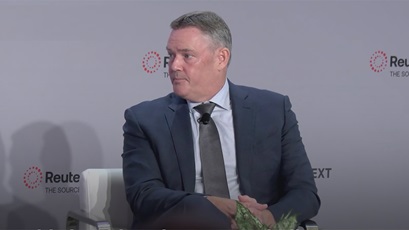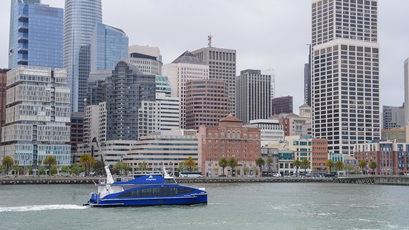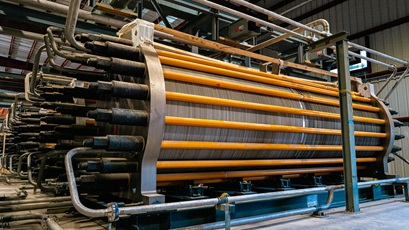alternative fuels
toyota and chevron drive progress with renewable gasoline blend
2 min read | july 18, 2024
See how Chevron and Toyota teamed up to fuel new vehicles with a renewable gasoline blend.
Three key takeaways from this article:
- This new fuel blend can be used in virtually any vehicle on the road today.
- It functions like traditional gasoline—no engine changes are required.
- Toyota recently used it with existing fuel storage infrastructure for a “first fill” in a shipment of new vehicles.
a couple of firsts
Toyota Logistics Services at the Port of Portland recently received a special delivery from Chevron: 4,000 gallons of a renewable gasoline blend. Compared with traditional gasoline, it could reduce a vehicle’s lifecycle carbon dioxide emissions by more than 40%.
At the Port of Portland site, this renewable blend was put in an existing fuel storage tank. When a shipment of new vehicles came into port on April 11, Toyota used this renewable fuel blend to provide a “first fill,” or the first few gallons used to transport new vehicles to dealers.
behind the blend
Creating a renewable gasoline blend is both an art and a science. Izadyar Dalvand, an engine laboratory operations supervisor at the Chevron Richmond Engine Laboratory, was an integral part of the team that developed this new product, which contains more than 50% renewable content.
“It’s great to be involved in creating a totally new renewable gasoline blend, and to see it used in vehicles,” Dalvand said.

Izadyar Dalvand (left), Tuyen Huynh (center) and Wesley Caldwell (right) worked on the blend at the Chevron Richmond Engine Laboratory.
on the road
Dalvand's team played a key role in creating a gasoline blend that delivers performance while lowering carbon intensity.
Although it’s not yet available for widespread consumer purchase, Chevron demonstrated its renewable gasoline blend on a 1,000-mile road trip in July 2023. The blend fueled three Toyota vehicles—a Camry, a RAV4 and a Tundra—that traveled across parts of the southeastern U.S. in a variety of weather and terrain conditions.
The recent delivery to Toyota’s operations facility is the next step toward making this fuel available to drivers.
izadyar dalvand
engine laboratory operations supervisor
what’s next
A vehicle sold today could still be on the road in the 2040s. Renewable blends like this one are compatible with existing cars, could provide performance similar to that of traditional fuels, and help support a lower carbon intensity future.
Chevron’s Andy Walz, president of Chevron Americas Products, recently spoke about the need for supportive, well-designed policies that will help scale production of renewable fuels so they can be offered to consumers and lower the carbon intensity of driving existing cars.
To learn more about how Chevron and Toyota are working together to lower carbon intensity, watch Driving Decarbonization in America—their partnership is featured in the second episode, which airs July 19. The series is available to stream free for a limited time on Discover Go.
topics covered
related content
-

 novel ideas, established companies key to advancing lower carbon tech
novel ideas, established companies key to advancing lower carbon techemissions solutionsjanuary 14, 2025
-

 chevron CEO talks growing production, efficient spending
chevron CEO talks growing production, efficient spendingemissions solutionsdecember 18, 2024
-

 1st US hydrogen-powered passenger ferry open for business
1st US hydrogen-powered passenger ferry open for businessalternative fuelsaugust 23, 2024
-

 ACES hydrogen project to advance lower carbon future
ACES hydrogen project to advance lower carbon futureemissions solutionsjuly 03, 2024
chevron email updates
Subscribe to our newsletter to receive news and updates.



